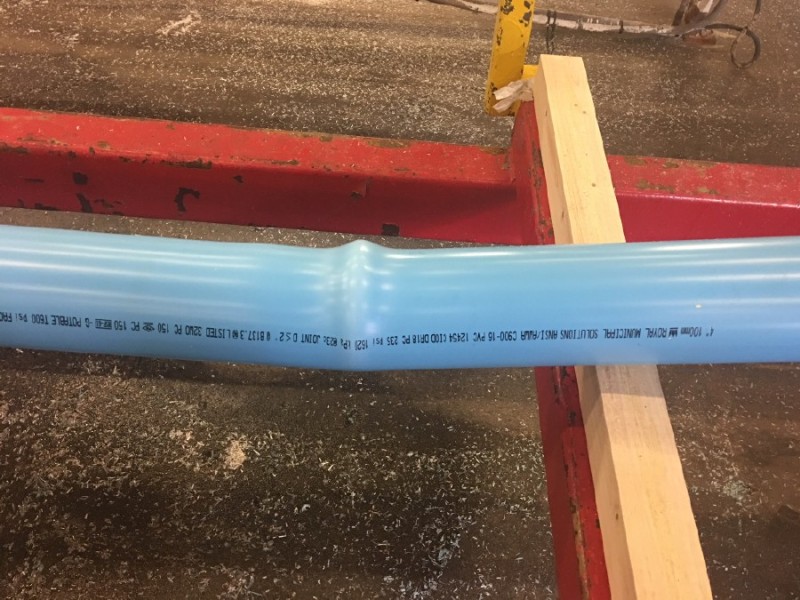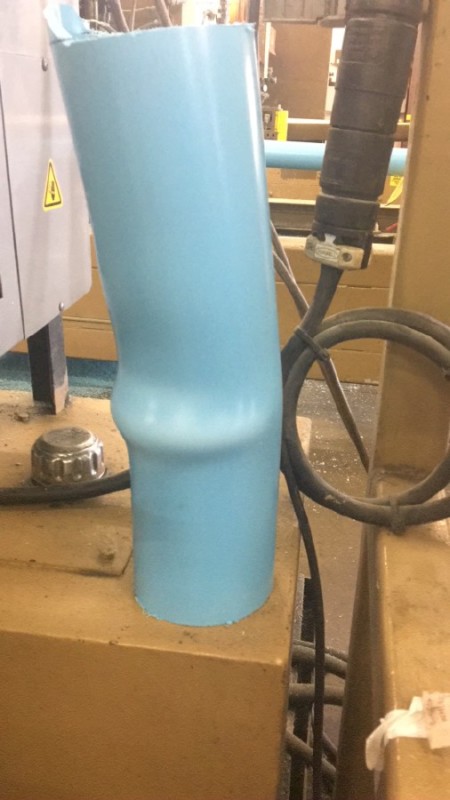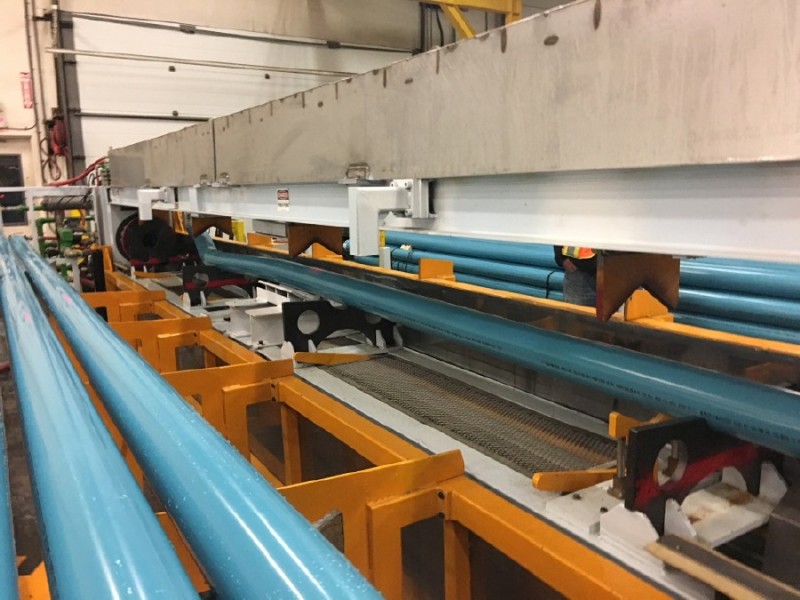ulloap
Mechanical
- Jul 5, 2007
- 22
Hi Gents,
I’m a machinery designer for the PVC Pipe Industry, few months ago I was involved to design a Hydrostatic Pipe Tester according to AWWA C900/5 or FM Standard. One of the special features requested by my customer was “Quick-Burst” capability using a whole pipe -6.1m / 20ft long- as a sample instead of using short pipe samples as the standard said.
The machine is capable to test from 4C900 to 12C900, and hasn’t any problem performing Hydrostatic regular test or quick-burst test -according to the DR- in all the size from 6C900 up to 12C900
Few weeks ago I was testing 4C900 DR18 at quick burst pressures -740 psi- during time required by the standard -60sec-and something strange to me started happening, the pipe itself buckled…as you shown below.
As a mechanical engineer I’m trying to relate the behavior of the pipe itself with Euler Column Effect, with no much success…
What I’m to intent is to simulate by FEA what’s happening, I don’t know exactly if I’m clamping too much the pipe or maybe I’m adding extra support “points” to it….
Do you guys have seen this kind of buckling before on a pvc pipe during a test?
Any suggestion will be helpful!
Regards
LPUS
I’m a machinery designer for the PVC Pipe Industry, few months ago I was involved to design a Hydrostatic Pipe Tester according to AWWA C900/5 or FM Standard. One of the special features requested by my customer was “Quick-Burst” capability using a whole pipe -6.1m / 20ft long- as a sample instead of using short pipe samples as the standard said.
The machine is capable to test from 4C900 to 12C900, and hasn’t any problem performing Hydrostatic regular test or quick-burst test -according to the DR- in all the size from 6C900 up to 12C900
Few weeks ago I was testing 4C900 DR18 at quick burst pressures -740 psi- during time required by the standard -60sec-and something strange to me started happening, the pipe itself buckled…as you shown below.
As a mechanical engineer I’m trying to relate the behavior of the pipe itself with Euler Column Effect, with no much success…
What I’m to intent is to simulate by FEA what’s happening, I don’t know exactly if I’m clamping too much the pipe or maybe I’m adding extra support “points” to it….
Do you guys have seen this kind of buckling before on a pvc pipe during a test?
Any suggestion will be helpful!
Regards
LPUS



